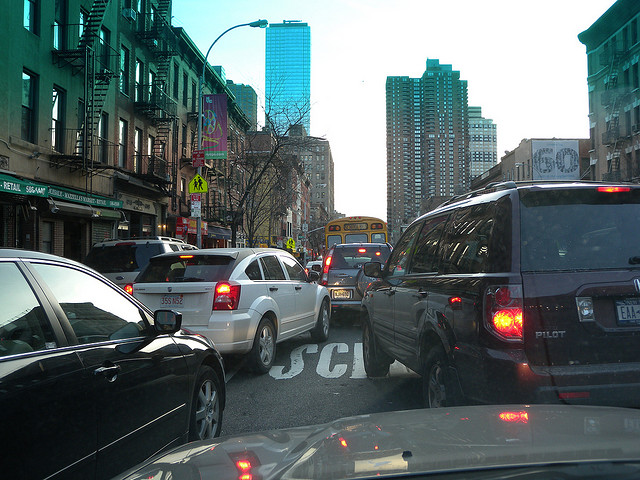
I got an email a short time ago that warned me to open the windows in my car to let it air out before turning on my air conditioning, to avoid exposure to toxic chemicals like benzene. As with all these email warnings, I always wonder-is there any truth in it, or is it just another misinformed message?
In this case, I found some truth-important enough to share with Cinco Vidas readers. Here’s the real deal.
Your car-like any enclosed area-tends to trap air inside when it’s left for hours or even days and weeks without being opened. In addition, particularly when you’re driving in heavy traffic, the interior of your car, simply because it’s less ventilated then the air outside, can become more concentrated with toxic pollution. You may have heard of indoor air pollution in your home. Well, this is something similar, only now we’re talking about “in-car” air pollution. (By the way, none of this has anything to do with the air conditioning-it’s strictly about pollutants being trapped inside the car.)
A report by the International Center for Technology Assessment reviewed 23 studies covering the main pollutants found in cars, including particulate matter (which can include smoke, dirt, dust, mold, spores, and pollen), volatile organic compounds (VOCs like benzene, which has been linked with cancer), carbon monoxide, nitrogen oxides, and ozone.1 You can read the report for all the details, but here are a few highlights:
- Concentrations of VOCs were over 6 times higher in cars than at fixed-site measuring stations and nearly 2 times higher than at the side of the road.
- Car commuters were exposed to more benzene than subway commuters, even though subway commutes were shorter.
- Two studies showed higher benzene concentrations in passenger cars during urban driving than during suburban or highway driving.
- Improperly maintained vehicles had higher in-vehicle concentrations of benzene.
- A 1995 study found that most in-car VOCs come from outside exhaust (not dashboards and seats as the email implied).
- Carbon monoxide levels inside cars showed consistently higher than in ambient air. Driving on urban streets caused higher in-car exposures than rural roads or interstates.
A quote from the center: “This report found that pollution levels inside cars are often much higher than those detected in the ambient air, at the roadside, and in other commonly used vehicles.”
The email I received mentioned a Korean study that also detected toxic chemicals like benzene, toluene, and methl-tertiary butyl ether (MTBE) inside of cars during commutes.2 They weren’t sure of the source of these chemicals, however.
After reviewing these reports and studies, it makes sense to me. Your car can trap airborne chemicals inside. If you’re driving in busy traffic, especially, your exposure to some of these toxins is probably going to be higher than if you’re on the highway or driving through the country. If you leave your car sitting for awhile without ventilation, the air is likely going to become more concentrated with dangerous chemicals.
Here are some easy tips to lower your risk of in-car toxic pollution:
- Drive less-walk or bike to work if you can.
- Keep your vehicle properly maintained. Vehicles that spew more exhaust because of faulty engine operation are likely to expose you and those around you to more toxic chemicals.
- Use public transportation. Though the Korean study showed some exposure to toxic chemicals on the bus, they were lower than that within a commuting car.
- When you get in your car, roll the windows down and let it air out before closing it up.
- Encourage your elected officials to support public transportation projects in your area, particularly if you live in a large city with a lot of traffic.
What do you think of this report? Are you going to change your driving habits? Please share your thoughts.
Sources
- International Center for Technology Assessment, “In-Car Air Pollution: The Hidden Threat to Automobile Drivers,” Report No. 4. An Assessment of the Air Quality Inside Automobile Passenger Compartments. July 2000. http://www.icta.org/doc/In-car%20pollution%20report.pdf.
- Jin-Woo lee and Wan-Kuen Jo, “Actual Commuter Exposure to Methyl-Tertiary Butyl Ether, Benzene, and Toluene While Traveling in Korean Urban Areas,” The Science of the Total Environment 291 (1-3): 219-228 (May 2002). http://www.sciencedirect.com/science/article/pii/S0048969701011019.
Photo courtesy LydiaLD via Flickr.com.

